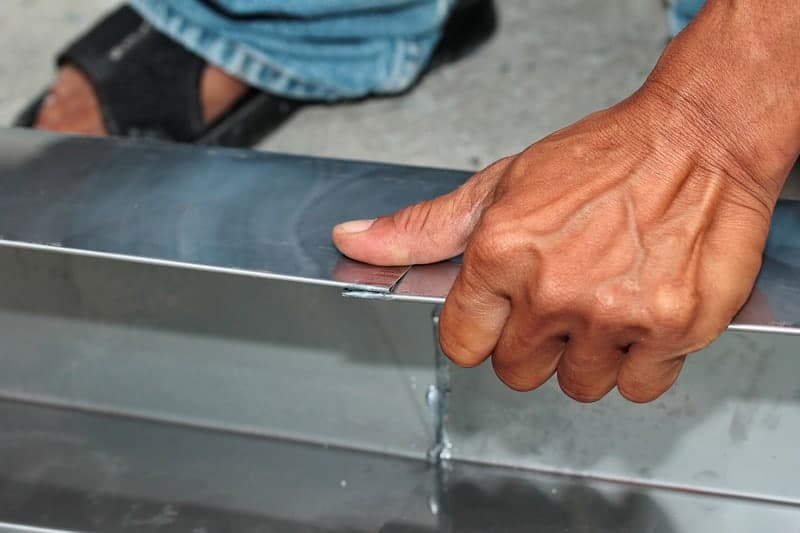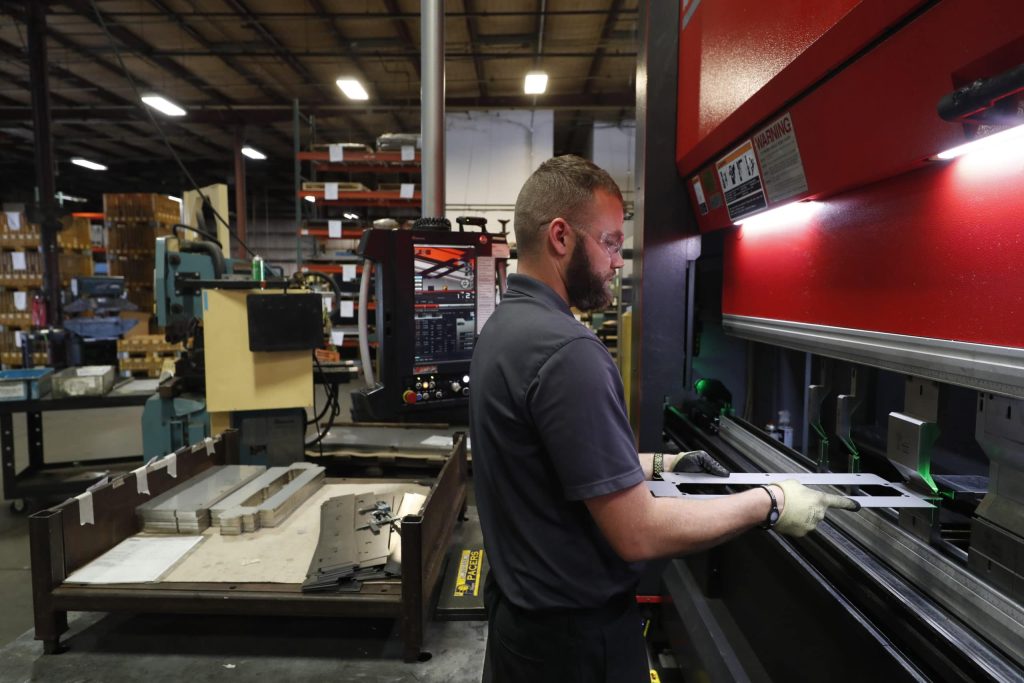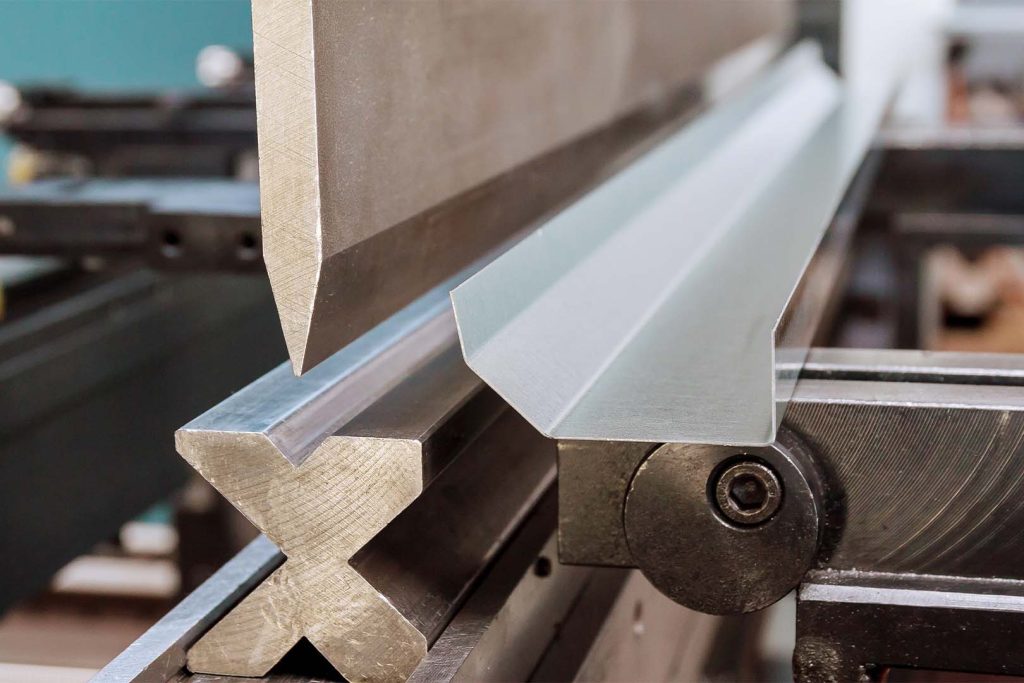Table of Contents
Are you a DIY enthusiast who loves working with metal? If you’re wondering if you can stick weld sheet metal, you’ve come to the right place. Stick welding, also known as shielded metal arc welding, can be a great option for welding thicker metals, but what about thinner sheet metals? In this article, we’ll explore the ins and outs of stick welding sheet metal and provide you with some tips and tricks to ensure a successful weld. So let’s dive in and find out if stick welding is the right choice for your sheet metal welding needs.
Can You Stick Weld Sheet Metal?
If you’re looking to learn how to weld sheet metal, you’ve probably been wondering whether or not stick welding is a viable option. Stick welding, also known as shielded metal arc welding (SMAW), is a welding process that uses a flux-coated electrode to create an electric arc that melts the metal and fuses it together. In this article, we’ll explore whether or not you can stick weld sheet metal, and what you need to know to do it successfully.
Understanding the Challenges of Stick Welding Sheet Metal
When it comes to welding sheet metal, there are a few challenges that you need to be aware of before you start. The first challenge is that sheet metal is typically thin, which means that it can warp or distort easily if it is exposed to too much heat. This can be especially problematic with stick welding, which tends to produce a lot of heat and can be difficult to control.
Another challenge with stick welding sheet metal is that it can be difficult to get good penetration with the electrode. This is because the electrode is designed to produce a lot of heat, which can cause the metal to melt too quickly and prevent it from fusing properly. Additionally, if you’re not careful, you can end up burning a hole through the metal or creating a weak spot that is prone to cracking.
To overcome these challenges, it’s important to use the right techniques and equipment when stick welding sheet metal. This includes using a lower amperage setting, using a smaller electrode, and using a shorter arc length to reduce the amount of heat that is produced.
The Benefits of Stick Welding Sheet Metal
Despite the challenges, stick welding can be a viable option for welding sheet metal in certain situations. One of the main benefits of stick welding is that it is a relatively simple and affordable process that doesn’t require a lot of specialized equipment.
Stick welding is also a versatile process that can be used to weld a variety of metals, including carbon steel, stainless steel, and cast iron. This makes it a useful technique for a wide range of applications, from automotive repairs to construction projects.
Stick Welding vs Other Welding Processes
While stick welding can be a useful technique for welding sheet metal, it’s important to understand how it compares to other welding processes. One of the main differences between stick welding and other processes, such as MIG welding, is that stick welding produces a lot of heat and can be difficult to control. This can make it more challenging to weld thin materials like sheet metal.
Another difference between stick welding and other processes is that stick welding requires a lot of cleanup and preparation. This is because the flux coating on the electrode can produce a lot of slag and debris that needs to be removed after welding.
Overall, while stick welding can be a viable option for welding sheet metal, it’s important to consider the specific requirements of your project and choose the right technique accordingly.
Conclusion
In conclusion, stick welding can be a viable option for welding sheet metal, but it comes with its own set of challenges and limitations. To successfully stick weld sheet metal, it’s important to use the right techniques and equipment, including a lower amperage setting, a smaller electrode, and a shorter arc length. Additionally, it’s important to understand the benefits and limitations of stick welding compared to other welding processes. With the right approach, you can successfully stick weld sheet metal and achieve strong, durable welds.
Frequently Asked Questions
Can You Stick Weld Sheet Metal?
Yes, you can stick weld sheet metal, but it requires a lot of skill and experience to do it properly. Stick welding, also known as Shielded Metal Arc Welding (SMAW), is typically not the best method for welding thin sheets of metal. It is better suited for thicker materials as the heat input can be controlled more easily.
When welding sheet metal with stick welding, you need to be very careful not to burn through the metal. This can happen easily and quickly with too much heat input. It is essential to use a low amperage setting and a small diameter electrode to produce a precise weld. Additionally, it is crucial to use the correct welding technique to avoid warping or distorting the metal.
What Type of Electrode is Best for Stick Welding Sheet Metal?
Choosing the right electrode for stick welding sheet metal is crucial to produce a successful weld. The best electrode for welding sheet metal is a 6013 electrode. The 6013 is a versatile electrode that can be used on a variety of metals, including sheet metal.
The 6013 electrode is known for its ability to produce a smooth and consistent arc, making it easier to control the heat input. It also has a fast-freezing slag that helps to prevent burn-through and warping. When using a 6013 electrode, it is essential to use a low amperage setting and a small diameter electrode to produce a precise weld.
What Thickness of Sheet Metal Can You Stick Weld?
Stick welding is not the best method for welding thin sheets of metal. Typically, sheet metal that is less than 1/8 inch thick is too thin to weld with a stick welder. Thicker sheets of metal, such as those that are between 1/8 inch and 1/4 inch, can be welded with a stick welder but require a lot of skill and experience to do correctly.
When stick welding thicker sheets of metal, it is essential to use a low amperage setting and a small diameter electrode to produce a precise weld. It is also crucial to use the correct welding technique to avoid warping or distorting the metal.
What Are the Advantages of Stick Welding Sheet Metal?
Stick welding sheet metal has several advantages, including its versatility and portability. Stick welding can be done in any position, making it ideal for welding in tight spaces or hard-to-reach areas. Additionally, stick welding equipment is portable, making it easy to move from one job site to another.
Another advantage of stick welding sheet metal is that it is a cost-effective method. Stick welding equipment is relatively inexpensive compared to other welding methods, making it an excellent option for those on a tight budget. It is also a straightforward welding method that requires minimal equipment and training.
What Are the Disadvantages of Stick Welding Sheet Metal?
Stick welding sheet metal has some disadvantages, including the potential for burn-through and warping. Stick welding produces a lot of heat, and if not done correctly, it can cause the metal to warp or distort. Additionally, stick welding can be difficult to control, making it challenging to produce precise welds.
Another disadvantage of stick welding sheet metal is the amount of clean-up required after welding. Stick welding produces a lot of slag, which needs to be chipped off after welding. This can be time-consuming and require additional tools.
Overall, stick welding sheet metal requires a lot of skill and experience to do it correctly. While it has some advantages, it may not be the best method for welding thin sheets of metal.
In conclusion, the answer to the question “Can You Stick Weld Sheet Metal?” is a resounding yes. Stick welding, also known as shielded metal arc welding, is a versatile welding process that can be used on a variety of materials, including sheet metal.
However, it’s important to note that stick welding sheet metal requires a high degree of skill and precision. The thin nature of sheet metal means that it is prone to warping and distortion during the welding process. As such, it’s crucial to use the correct welding technique, amperage, and electrode type to ensure a strong and reliable weld.
If you’re new to welding or haven’t worked with sheet metal before, it’s recommended to practice on scrap pieces first before attempting to weld a project. With patience, practice, and the right techniques, you can successfully stick weld sheet metal and create quality welds that will stand the test of time.
Request a quote today!
[contact-form-7 id="1578" title="Contact form"]
Please compress the file into a ZIP or RAR file before uploading. Alternatively, send through your RFQ by email.
enquires@unitymanufacture.com




